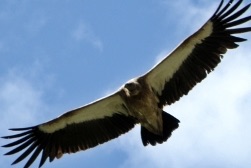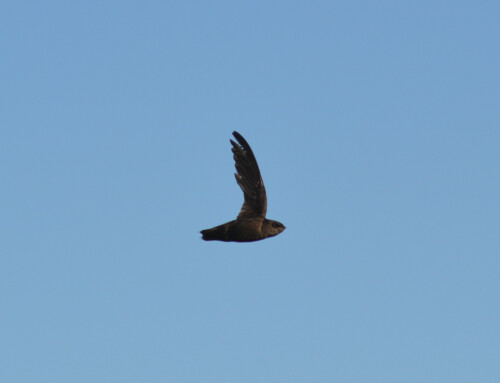The Himalayan Griffon in the western Himalayas
In the late 1980s, a famous Indian television programme ‘Ramayana’, a great Indian epic, was telecasted on Doordarshan Channel. It was the most popular and famous programme and well-liked by people of all age groups. In Ramayana, a vulture king named Jatayu lost his life to save Mother Sita who had been kidnapped by Ravana, the evil force. Jatayu’s character won heart of many and occupies a special place in people’s hearts. Ramayana was based on a religious scripture of the same name, which recognized the importance of vultures and declared them to be sacred. For this reason, vultures possess a special status in Indian culture and society and for thousands of years it has helped in the conservation of this important group of birds.
Today, very few people in India are aware of the fact that 99% of the country’s vulture population has declined due to use of Diclofenac, an anti-inflammatory veterinary drug (Green et al 2004; Shultz et al 2004). When Gyps vultures feed on carcasses of livestock that were previously treated with Diclofenac, the drug causes renal failure in the birds, resulting in their death. The once very common species of the Gyps family are now very difficult to see throughout India. The Indian Government took some initiatives to restore the vulture population, but these birds are still struggling to survive, which is not surprising considering their small clutch sizes and slow breeding rates (ENVIS 2016).

The Himalayan Griffon, Gyps himalayensis is a large majestic bird, with a wing span of 120 cm, found at altitudes of 900-4000 mean sea level. Himalayan Griffons nest on mountain cliffs (Kazmierczak and Perlo, 2009). The species is classified as Near Threatened in the IUCN Red List (Birdlife 2014). The Himalayan Griffon occupies an important position in the food chain, as the vultures provide an ecological service by scavenging dead and decaying animal carcasses. Their presence in the terrestrial ecosystem ensures a clean environment and healthy functioning ecosystem free from disease.

Recently, our team conducted field surveys in the towns and cities of Himachal Pradesh, India. Himachal Pradesh is an Indian State in the Western Himalayas. We carried out our surveys in Kangra, Dharamshala, Palampur, Mandi, Kullu and Shimla City in June 2016. Unfortunately, we were disappointed by the fact that Himalayan Griffons were not recorded at any of these towns and cities. Last year, a Himalayan Griffon vulture flock was only recorded in the higher reaches of Hurla and Sainj Valley (unpublished record, Jolli 2015). It raises the question whether the Himalayan Griffon population is also declining and if so, whether this is a result of Diclofenac.

Though the Government of India banned the drug in 2006 for veterinary use, the drug is still available for human use (TOI 2015). Therefore, for the conservation of this sacred bird of India, we need greater participation between the people of Himalayas together with the Government at the centre, state and local level to further investigate and understand the current distribution and status of the Himalayan Griffon in the Himalayas.
References and further reading
Birdlife International 2014. Gyps himalayensis. The IUCN Red List of Threatened Species 2014: e.T22695215A61539706. Downloaded on 07 July 2016. View
ENVIS 2016. India has a grand plan to bring back its vultures. Downloaded on 08th July 2016. View
Green, R. E., Newton, I. A. N., Shultz, S., Cunningham, A. A., Gilbert, M., Pain, D. J. and Prakash, V. 2004. Diclofenac poisoning as a cause of vulture population declines across the Indian subcontinent. Journal of applied ecology, 41 (5), 793-800. View
Kazmierczak, K. and Perlo, V. B. 2009. Om Field Guides – Birds of India. Om Book International, New Delhi, India.
Shultz, S., Baral, H. S., Charman, S., Cunningham, A. A., Das, D., Ghalsasi, G. R., Goudar, M. S., Green, R. E., Jones, A., Nighot, P., Pain, D. J. and Prakash, V. 2004. Diclofenac poisoning is widespread in declining vulture populations across the Indian subcontinent. Proceedings of the Royal Society of London B: Biological Sciences, 271 (Suppl 6), S458-S460. View
TOI 2015. Health ministry bans bigger diclofenac vials to save vultures. Downloaded on 08th July 2016. View
Image credit
Featured image: Himalayan Griffon, Gyps himalayensis, Himachal Pradesh, India © Virat Jolli
If you want to write about your research in #theBOUblog, then please see here.






